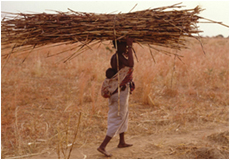- Home
- > Study Groups and their Achievements
- > Group 2: Overview of Arrangement and Systematization of Physical Techniques and Sensibility
- > Task 1
Study Groups and Achievements
Arrangement and Systematization of Physical Techniques and Sensibility
Task 1: Comparative Study of Physical Techniques
- Research Process
- │
- Research Results

To introduce our comprehensive research work from a humanities viewpoint, we published Cross-cultural Comparison by Triangulation in 2004 based on our on-the-spot research in Japan, France and West Africa. At the program’s first international symposium in 2005, a group member gave a keynote speech entitled “Studying Human Cultures through Nonwritten Materials.” Moreover, we carried out a series of field studies: in Mexico in April 2004; Inner Mongolia in September 2004; and Mongolia in July 2005. We made another field trip to France in December 2005 in the hope of deepening our understanding of human sensibility.

We engaged in field work in the pursuit of “digitalization and quantitative comparison of body expressions in the performing arts or intersection between techniques of body and senses and sensibility” and made full use of motion-capture CG. Traditional performing arts require fixed sequences of steps and movements showing formalized and stylized body expressions, and they are performed on stage. In folk performing arts, acts like jumping and circling are repeated to express people’s wishes for purifying themselves and bringing in good fortune. They are performed at ritual ceremonies where people are believed to be united with a god. To compare these two distinctive forms of arts, we collected data by observing movements of a main character in a Noh play of the Kanze School and a ritual dance performed at the Hanamatsuri festival in Okumikawa, Aichi Prefecture, Japan as well as a Nuo dance performed in Shiyou Village, Nanfeng County, Jiangxi Province, China
